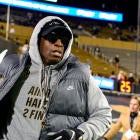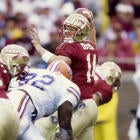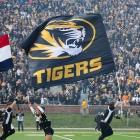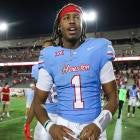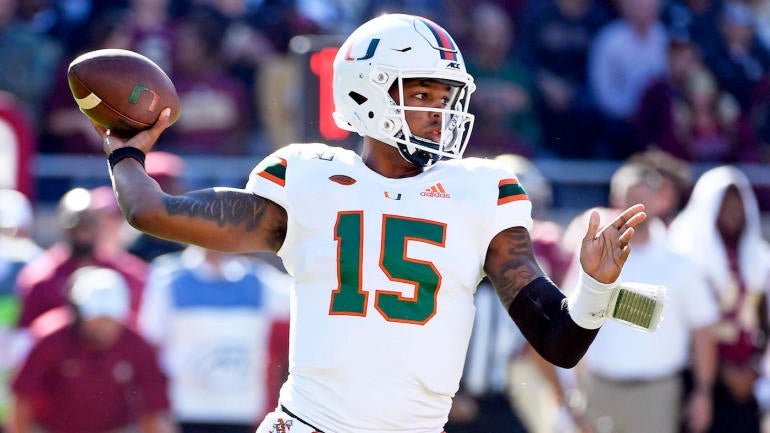
When the news broke that former Houston quarterback D'Eriq King was transferring to Miami, I had two initial reactions. One was that it was positive news for Miami's offense because King is an ideal fit for what new offensive coordinator Rhett Lashlee likes to do with his offenses. The second was wondering what it would mean for ex-Hurricanes starter Jarren Williams.
Miami had a lot of problems in 2019, but Jarren Williams wasn't one of them. Williams, a four-star member of Miami's 2018 class from Lawrenceville, Georgia, was something of a surprise last year. With N'Kosi Perry handling a lot of the starting duties for Miami in 2018 and a high-profile transfer like Tate Martell coming in from Ohio State last summer, not many were giving Williams a shot at winning the starting job with the Hurricanes going into the fall. He did, though. And all things considered, he played well.
This is why I believed Manny Diaz would be well-served to do everything he could to keep Williams in Coral Gables. It doesn't look like he will, however, because it was announced on Thursday that Williams has entered his name in the transfer portal. Now, entering the portal and transferring are two very different things, but I believe we've seen Williams take his last snap as a Hurricane. If other coaches saw what I saw from Williams last year, there won't be any shortage of interest in him.
If we look at Williams' raw stats from 2019, they don't blow anybody away but are still impressive for a redshirt freshman. He completed 61.2 percent of his passes for 2,187 yards (7.9 yards per attempt) with 19 touchdowns and seven interceptions. If we delve deeper, we find that Williams' numbers could have been substantially better if he'd been afforded more help.
According to Sports Info Solutions, 106 FBS quarterbacks threw at least 200 pass attempts last season. Of those 106, Williams' completion rate of 61.2 percent ranked below the middle of the pack at 61st. Completion percentage isn't always the best indicator of a QB's accuracy, however, but thankfully SIS also has a stat called on-target rate. It's exactly what it sounds like -- as it describes the percentage of a quarterback's throws that were on-target and catchable.
Williams had an on-target rate of 77.2 percent in 2019. On its own, that tied for 18th (along with Eastern Michigan's Mike Glass) among those 106 QBs. But more importantly than the number itself, or where Williams ranked, is the difference between his on-target rate and his completion rate. Williams' on-target rate was a full 16 percent better than his completion rate. Of the 106 FBS QBs with at least 200 pass attempts last season, only one had a more considerable disparity between their completion percentage and on-target rate. That was Michigan's Shea Patterson, who had an on-target rate of 75.2 percent while completing only 56.2 percent of his passes for a 19 percent difference (so maybe it wasn't his fault at Michigan, either).
| Quarterback | Comp.% | On-Target % | Difference |
|---|---|---|---|
Shea Patterson, Michigan | 56.2 | 75.2 | 19.0% |
Jarren Williams, Miami | 61.2 | 77.2 | 16.0% |
53.2 | 69.2 | 16.0% | |
53.8 | 68.6 | 14.8% | |
48.3 | 63.0 | 14.7% | |
Caleb Evans, ULM | 61.3 | 75.9 | 14.6% |
55.1 | 69.5 | 14.4% | |
59.6 | 73.9 | 14.3% | |
59.2 | 73.4 | 14.2% | |
65.8 | 79.9 | 14.1% |
Things didn't get better for Williams when Miami tried to push the ball down the field. Here's a breakdown of the difference in Williams' completion rate and on-target rate based on the distance of Williams' passes. An air yard, for those unaware, is a simple stat. Every yard a ball travels past the line of scrimmage is an air yard. So, if the line of scrimmage is the 20 and a pass is completed at the 27-yard line, it traveled 7 air yards.
| Air Yards | Attempts | Comp. % | On-Target % | Difference |
|---|---|---|---|---|
All | 276 | 61.2 | 77.2 | 16.0% |
0+ | 206 | 58.3 | 77.7 | 19.4% |
5+ | 165 | 55.2 | 74.5 | 19.3% |
10+ | 105 | 51.4 | 72.4 | 21.0% |
15+ | 55 | 47.3 | 67.3 | 20.0% |
20+ | 30 | 36.7 | 50.0 | 13.3% |
As the table shows, Williams was still relatively accurate with his passes until he was asked to throw further than 20 yards, which is where his accuracy fell off a cliff. Of 109 QBs to throw at least 30 pass attempts of 20+ air yards, Williams' 50 percent on-target rate tied for 57th overall; so while it wasn't great, it was still about average. That is, by no means, a horrible place to be for a freshman.
The table also highlights that past 20 yards or closer, his receivers didn't do him many favors overall.
So what explains this difference? Well, Miami's receivers couldn't catch, is the simplest way to put it. Of the 130 FBS teams, Miami's receiving corps ranked 117th nationally in on-target catch rate (number of catchable balls receivers catch) at 80.2 percent. Only seven Power Five schools had a lower rate, with Michigan coming in 129th nationally at 75.2 percent (again, sorry, Shea Patterson). Here are the worst Power Five schools:
| School | On-Target Catch Rate |
|---|---|
Michigan State | 80.4% |
80.4% | |
Miami | 80.2% |
79.5% | |
79.2% | |
79.1% | |
TCU | 78.5% |
77.7% | |
NC State | 77.0% |
Michigan | 75.2% |
Williams did all of this playing behind an offensive line that didn't do him many favors, either. According to Football Outsiders' offensive line metrics, Miami's offensive line ranked 121st nationally in sack rate overall, as well as 117th in sack rate on standard downs and 120th on passing downs. Now, offensive lines are easy to blame when it comes to allowing sacks, as it's seen as their job to protect the quarterback. The truth is that the quarterback is nearly as culpable as the offensive line in most cases, so Williams is not free of any blame himself. As a freshman, there were plenty of times he took too long to see the play and get rid of the ball, and that's something all quarterbacks need to work on.
Still, Miami's offensive line only ranked 71st nationally in line yards, and it ranked 124th nationally according to a metric of my own that I'm developing to rate offensive lines. So, no matter which way you want to look at it, Miami's offensive line did not perform well in 2019.
Yet, despite playing behind an offensive line that did not play well and with receivers who had trouble catching passes, Williams managed to put up respectable numbers for a freshman quarterback in 2019. All of which bodes well for his future as a college quarterback.
A future that looks like it will belong to another program at the moment.














